Domenichino (1581-1641)
We Perform Dosso Dossi art authentication. Dosso Dossi appraisal. Dosso Dossi certificates of authenticity (COA). Dosso Dossi analysis, research, scientific tests, full art authentications. We will help you sell your Dosso Dossi or we will sell it for you.
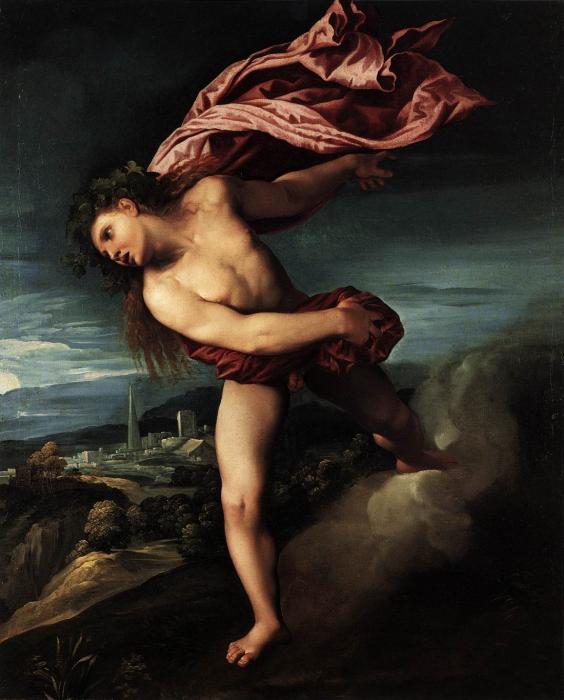
Dosso Dossi, real name Giovanni di Niccolò de Luteri, was an Italian Renaissance painter who belonged to the Ferrara School of Painting. Dossi was probably born in Tramuschio di Mirandola. His early training and life is not well-documented; his father was a bursar (spenditore or fattore) for the Dukes of Ferrara. He may have had training locally with Lorenzo Costa or in Mantua, where he is known to be in 1512. By 1514, he would begin three decades of service for dukes Alfonso I and Ercole II d’Este, becoming principal court artist. Dosso worked frequently with his brother Battista Dossi, who had trained in the Roman workshop of Raphael. He frequently provided the dukes in the ephemeral decorations of furniture and theater sets. He is known to have worked alongside il Garofalo in the Costabili polyptych. One of his pupils is Giovanni Francesco Surchi (il Dielai).
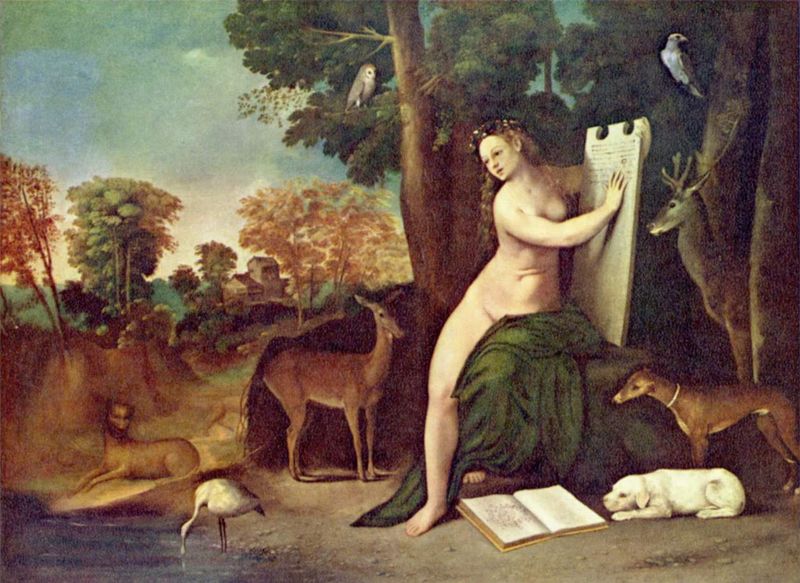
Dosso Dossi is known less for his naturalism or attention to design, and more for cryptic allegorical conceits in paintings around mythological themes, a favored subject for the humanist Ferrarese court (see also Cosimo Tura and the decoration of the Palazzo Schifanoia). Freedburg uses the term sprezzatura to refer to Dossi’s caricature-like, primitivist, and eccentric distortions of proportion. Dossi is also known for the atypical choices of bright pigment for his cabinet pieces. Some of his works, such as the Deposition have lambent qualities that suggest some of Correggio’s works.
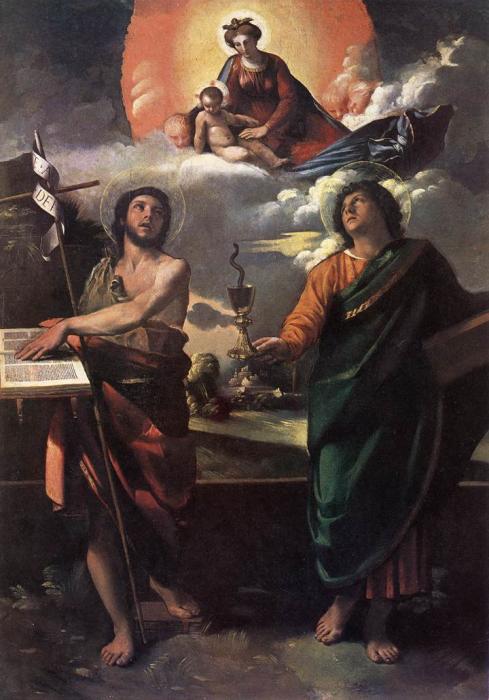
The painting Aeneas in the Elysian Fields was part of the Camerino d’Alabstro of Alfonso I in the Este Castle, decorated with canvases depicting bacchanalia and erotic subjects including Feast of the Gods by Giovanni Bellini and Venus Worship by Titian. The frieze paintings were based on the Aeneid; this scene by Dossi is book 6, lines 635-709, wherein Aeneas is guided over the bridge into the Elysian Fields by Cumaean Sibyl. Orpheus with the Lyre flits in the forest; In the background are the ghostly horses of dead warriers and diverse entertained bodies.
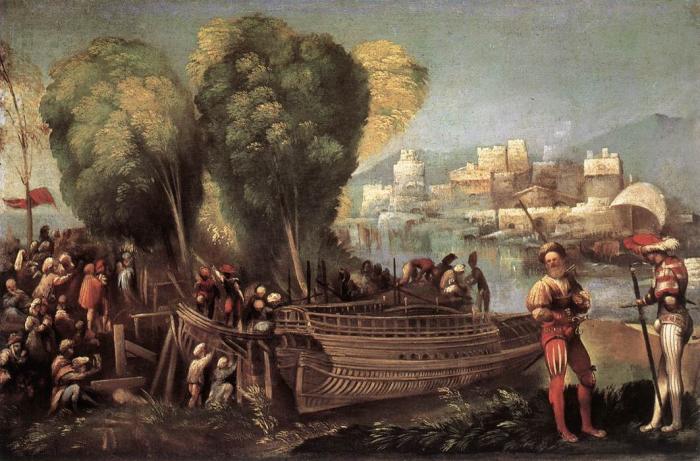
In Hercules and the Pygmies, Hercules has fallen aseep after defeating Antaeus, and is set upon by an army of thumb-size pygmies, whom he defeats. He gathers them in his lion skin. Paintings depicting a powerful Hercules were commonly made for the then-ruler Duke Ercole II d’Este. The subjects of the Myth of Pan or Tubalcain are unknown.

In Ferrara, among his pupils were Gabrieale Capellini, Jacopo Panicciati, and Giovanni Francesco Surchi.
Selected works:
- Holy Family with Donors (1514, Philadelphia Museum of Art)
- Allegory of Fortune, c.1530; oil on canvas, 178 x 216.5 cm, J. Paul Getty Museum
- Three Ages of Man or Rustic Idyll; 77.5 x 11.8 cm, Metropolitan Museum of Art
- Aeneas in the Elysian Fields , (1518-1521) National Gallery of Canada, Ottawa
- Aeneas, Barber Institute, Birmingham
- Hercules and the Pygmies Alte Galerie am Landesmuseum Johanneum Graz
- A Myth of Pan, (Getty Museum, Los Angeles)
- Tubalcain (Allegory of Music) Museo Horne Florence
- Witchraft Stregoneria (Choice of Hercules between Vice and Virtue) Galleria degli Uffizi
- Saint Michael (Staatliche Kunstsammlungen, Dresden)
- Saint George and the Dragon (Staatliche Kunstsammlungen, Dresden)
- The Virgin Appearing to Sts John the Baptist and John the Evangelist,(1520s,Uffizi, Florence)
- Jupiter, Mercury and the Virtue, (1524, Wawel Castle, Kraków)
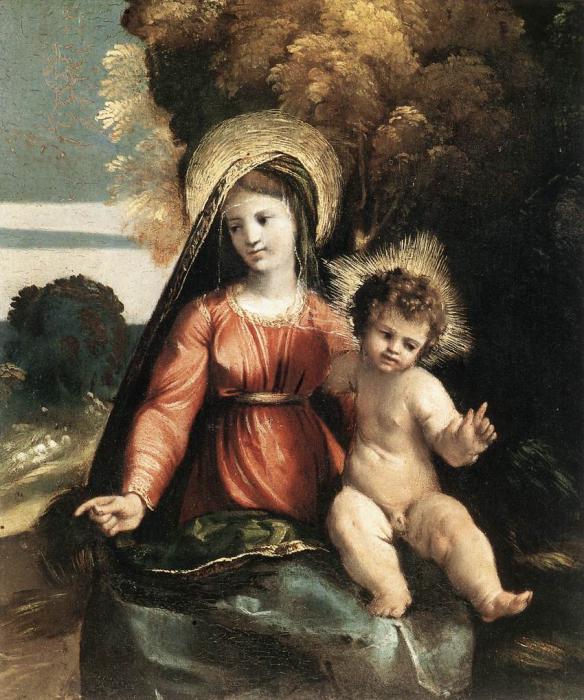
Still wondering about an Italian painting in your family collection? Contact us…it could be by Dosso Dossi.
Reviews
1,217 global ratings
5 Star
4 Star
3 Star
2 Star
1 Star
Your evaluation is very important to us. Thank you.
